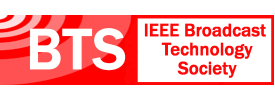- About
- Members
- Sponsors
- Subcommittees
- Technical Documents
- News
- Events
- Spotlight ATSC 3.0
- Contact Us
- Member Login
- Member Meetings
- Advanced Search
Search Site
Member Links
- About
- Members
- Sponsors
- Subcommittees
- Technical Documents
- News
- Events
- Spotlight ATSC 3.0
- Contact Us
- Member Login
- Member Meetings
- Advanced Search
BROADCASTERS MARK BEGINNING OF NEXTGEN TV ERA IN LAS VEGAS WITH LAUNCH OF ATSC 3.0 SERVICE, AS INDUSTRY “PROGRESS REPORT” SHOWS GROWING MOMENTUM FOR NEW TELEVISION TECHNOLOGY
Posted on May 26, 2020 in Press Releases
Update from 50-plus ATSC members shows momentum, demonstrates strong interest in new service
WASHINGTON, May 26, 2020 – Just as four broadcasters launch NEXTGEN TV service in the Las Vegas market, the Advanced Television Systems Committee is showcasing more than 80 NEXTGEN TV product and technology highlights in a new “Spring 2020 Progress Report” on its newly-launched “Spotlight ATSC 3.0” web page.
“Today marks another milestone in the advance to NEXTGEN TV, with ATSC 3.0 service launching in the Las Vegas market. ATSC congratulates Sinclair, Nexstar and E.W. Scripps for this achievement, which ushers in a new era in broadcast technology in Nevada. Now that consumers are able to purchase the first NEXTGEN TV receivers, it’s gratifying to see more broadcasters make investments to bring NEXTGEN TV to their viewers. And the television technology industry is strongly endorsing efforts like today’s Las Vegas service launch, and similar broadcasts underway now in Phoenix, Boise, Portland, Santa Barbara, Orlando, and Dallas. Additional stations are coming soon to Portland, Ore. and broadcasters in Pittsburgh, Pa. are now readying broadcasts that are expected to start later this year,” said Madeleine Noland, President of ATSC.
ATSC 3.0 Progress Report
The ATSC 3.0 “Progress Report” (available on ATSC.org) features scores of industry highlights organized into nine categories.
“As the standards organization that created ATSC 3.0, we are proud to showcase the substantial efforts underway by more than four dozen companies to support local broadcasters. From transmission equipment to new signal management products and services, to new receivers for consumers, we’re pleased to showcase the latest developments in the Spring 2020 Progress Report on ATSC 3.0 that is available for free on our website,” explained Noland.
Since first launching two weeks ago in conjunction with the NAB Show Express, more than 2,000 unique visitors have reviewed submissions from ATSC member companies. The Progress Report is expected to remain available throughout the summer, as more stations initiate service.
“Whether its new equipment, services, or learning opportunities, stakeholders are very interested in ATSC 3.0 – the technology that powers NEXTGEN TV and what will bring together over-the-air broadcasting with over-the-top choices for viewers. ATSC 3.0 represents a gigantic leap in functionality, with its Internet Protocol backbone and flexibility to offer 4K Ultra HDTV, High Dynamic Range, immersive audio, more robust signal delivery, and new ‘broadcast internet’ capabilities,” Noland said.
About ATSC:
The Advanced Television Systems Committee is defining the future of television with the ATSC 3.0 next-generation broadcast standard. ATSC is an international, non-profit organization developing voluntary standards for digital television. ATSC’s 130-plus member organizations represent the broadcast, broadcast equipment, motion picture, consumer electronics, computer, cable, satellite, and semiconductor industries. For more information visit www.atsc.org.
ATSC Media Contact:
Dave Arland
(317) 701-0084
Dave@ArlandCom.com
Posted in Press Releases
News Categories
News Archives
Subscribe
Subscribe to The Standard, our monthly newsletter. Learn More
Join ATSC
ATSC is a membership organization with both voting and observer categories. Voting members include corporations, nonprofit organizations, and government entities, and they participate actively in the work of ATSC. Observers are individuals or entities not eligible to be a voting member.
Subscribe to our Newsletter
Subscribe to The Standard, our monthly newsletter, to stay up-to-date with ATSC news and events around the world.
Site Links
Contact Us
Advanced Television Systems Committee, Inc.
1300 I Street NW, Suite 400E
Washington, DC 20005
Do you have questions about ATSC?
About ATSC
The Advanced Television Systems Committee, Inc., is an international, non-profit organization developing voluntary standards and recommended practices for digital terrestrial broadcasting. ATSC member organizations represent the broadcast, broadcast equipment, motion picture, consumer electronics, computer, cable, satellite, and semiconductor industries. ATSC also develops digital terrestrial broadcasting implementation strategies and supports educational activities on ATSC standards.
© 2025 ATSC




































